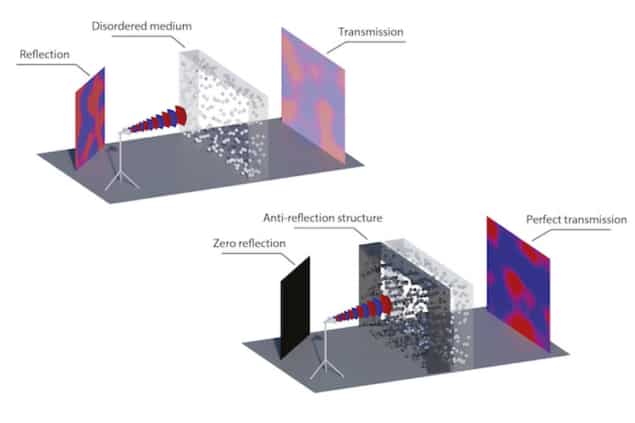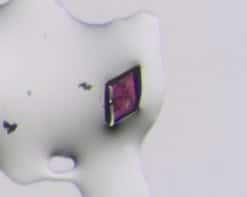
A new technique that completely prevents waves from being reflected off surfaces could improve wireless signal reception and biomedical imaging techniques. Developed by researchers in Austria and France, the technique involves first sending the waves through a special anti-reflective structure tailored to match the way waves would normally reflect from the front surface of an object. Notably, it does not require any knowledge of the object’s internal structure, broadening its potential applications.
Electromagnetic waves scatter – that is, they are deflected and reflected – off disordered media as they propagate through them. This scattering is a serious limitation for many applications, including telecommunications, biomedical imaging, seismology and materials engineering. Everyday effects of it include poor wireless reception, a fading radio signal and poor visibility when it is foggy.
In developing a way around it, the team led by Stefan Rotter of the TU Wien’s Institute of Physics and Matthieu Davy of the University of Rennes took inspiration from the anti-reflection coatings on pairs of eyeglasses. These coatings are designed to reduce the back-reflection of light, ensuring that whatever you are looking at is transmitted to your eyes as fully as possible.
The difference is that the Wien-Rennes team achieved this ability not for simple geometrical objects like lenses, but for “truly complex systems” like objects that scatter light in all directions, Rotter explains. “The anti-reflection structure we designed therefore also has a very complex shape, which results from an optimization procedure that notably does not require any knowledge of the obstacle’s internal structure,” he tells Physics World. “Instead, we only need to know how waves are reflected from its front surface. Indeed, this anti-reflection structure is a disordered medium itself, with the special property that it is perfectly matched to the fixed medium one aims to transmit across.”
A very complex shape
In their work, Rotter and colleagues sent microwaves through a metallic waveguide containing 17 Teflon cylinders and three metallic cylinders randomly distributed through a region 0.2 metres long. The waves scatter off objects in this multi-cylinder “obstacle course” to the extent that only about half reach the other side of the waveguide, while the other half get reflected.
The researchers then measured precisely how the waves were scattered by the waveguide using a mathematical model based on a two-dimensional scalar Helmholtz equation. This approach allowed them to calculate the additional scattering needed to form a perfect anti-reflective layer for this system.
Reflection reduced to almost zero
They found that when waves pass through this anti-reflective layer with its mathematically optimized scattering points before propagating though the region with the randomly-arranged scatterers, 100% reach the other side. Reflection is therefore reduced to almost zero.
“We think that our technique, which compensates for wave scattering with additional scattering, will be very useful for all applications in which wave fields need to be transmitted across complicated environments,” Rotter says. “In particular, we think here of wireless signals that need to be transmitted across a wall to a receiver located in another room or wavefront correction in biomedical imaging.”

Dark-coated Starlink satellites are better but not perfect, say astronomers
Rotter notes that wave dynamics and wave scattering are due to play a major role in 6G, the next generation of mobile communications after 5G. A technology like the one the Wien-Rennes team developed could reduce the intensity of mobile radio signals if such signals are sent along paths from the transmitter to the receiver that are designed to incorporate as little reflection as possible.
The researchers, who report their work in Nature, say they now intend to transfer their proof-of-principle experiment to applications such as wireless communications. “We believe that considerable potential lies in automating the design of the anti-reflection structure – a task for which techniques from machine-learning, for example, could be very useful,” Rotter says. He adds that it would also be helpful to identify ways that such metasurfaces, as they are known, could be made to self-adapt in a way that offers the desired anti-reflection functionality.



